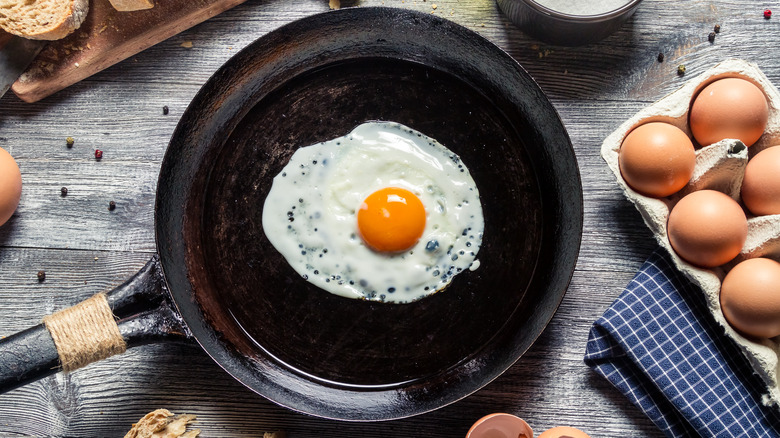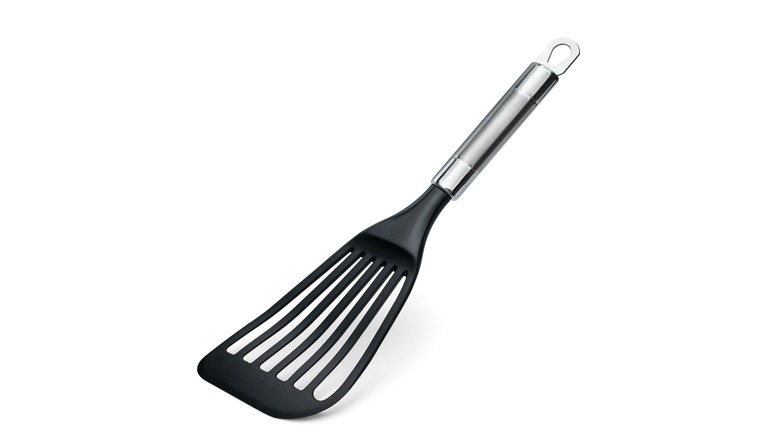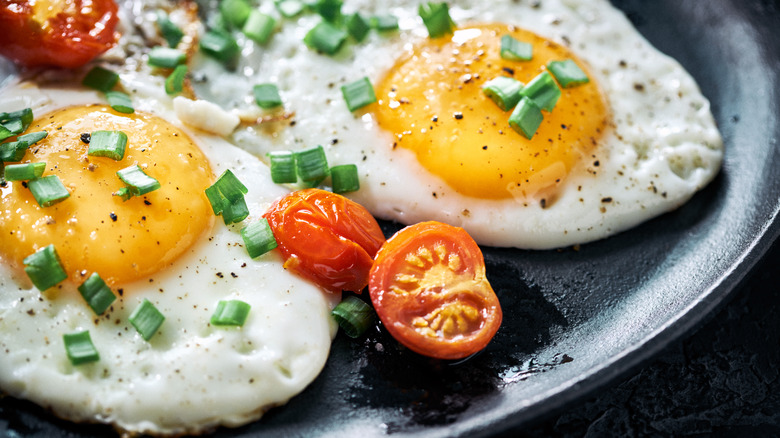A Fish Spatula Is Key To The Perfect Egg Flip
If you're looking for a picture-perfect breakfast, the last thing you want is a broken, messy egg. But while this delicate ingredient is easy to cook in theory, there are actually a few steps to getting that egg to flip perfectly every time — and arguably, the most important element is your spatula. Since egg whites are so thin, you want a cooking utensil that's going to easily get under them and is also wide enough to comfortably hold the majority of the egg; that's where a fish spatula comes in.
The biggest difference between a fish spatula and a regular spatula is how bendable it is. It's perfect for delicate foods, which is why it works so well with fish — but eggs are in that league, too. If you're worried about using a metal spatula on your nonstick pan, don't be; just buy a coated one suitable for nonstick.
A fish spatula is key to flipping a perfect egg
In addition to being bendable, fish spatulas are also extra thin, which helps since the egg white and yolk are both delicate: the thinness allows the spatula to get under the egg with ease, avoiding breakage. Plus, fish spatulas are wide enough at the top that they should be able to comfortably support the egg while you flip it. They're affordable, too, costing no more than a standard spatula.
While the spatula is important, if you're going to cook an egg, there are other ways to ensure an easy flip. First, make sure the pan is well-coated — whether it's nonstick or you add some cooking spray. If the egg has a chance to stick, it will. Plus, don't flip the egg until the underside is completely solid. Flipping too early means the egg white could run, leaving you with a mess. And since fish spatulas do have holes, you need to make sure none of that egg white falls through.
Other tips for cooking the perfect egg
While it's clear how to flip an egg, there are also some other best practices that don't have anything to do with flipping. For the most picture-perfect eggs, crack them into a small dish before transferring them into the pan. This allows you to pick out the shells or discard any eggs with imperfections, such as blood spots. If you don't want to throw these less attractive eggs away, you could save them for other recipes, such as a scramble.
Cook the eggs on low heat, too. Eggs cook quickly, and high heat could easily give them unwanted brown spots or even burn them — and nobody likes the taste of burnt eggs. They will still cook quickly on low heat, but you'll have more time to keep an eye on them and flip them at the perfect moment. And if you're going for sunny-side-up eggs that don't require flipping, place a lid over the pan to help cook the top of the egg more efficiently. You can also add a bit of water to create steam, which will help the eggs cook quickly.


